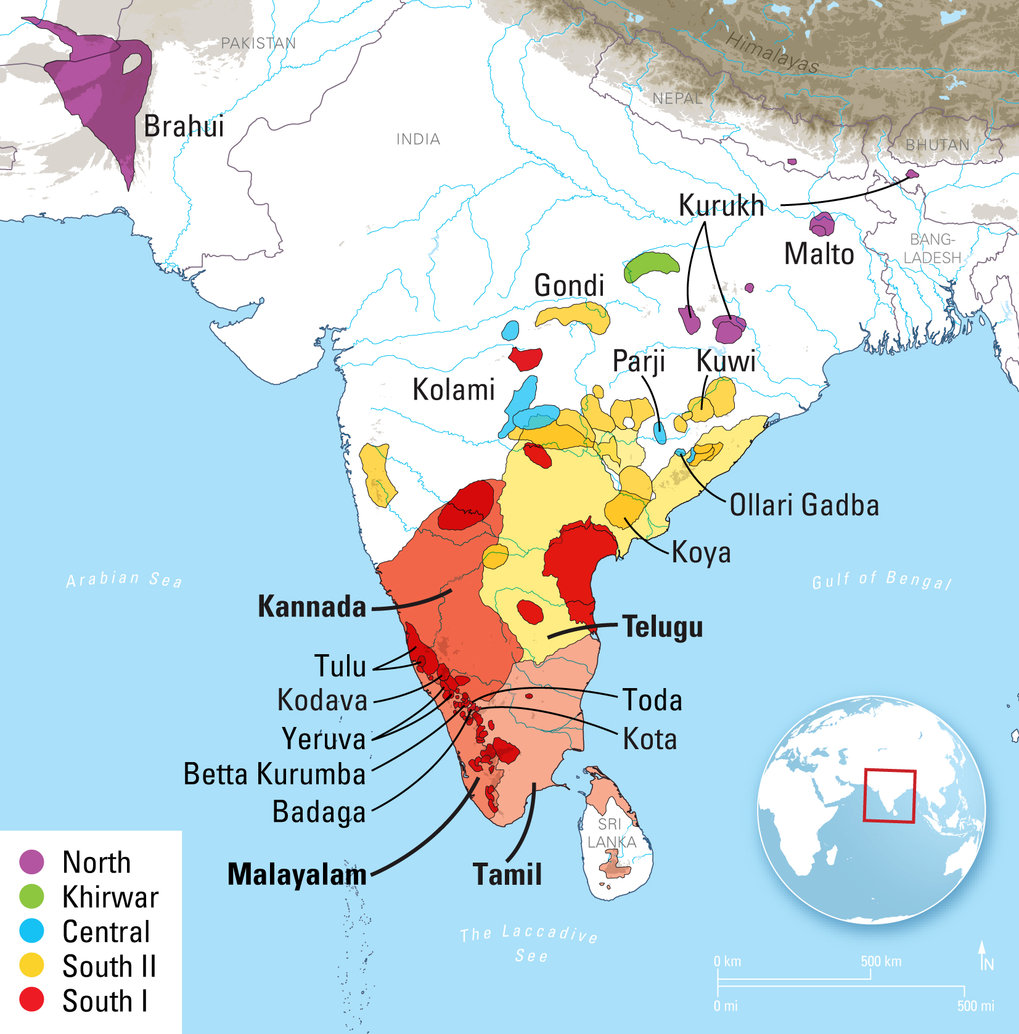 |
| Kolipakam et al. Royal Society Open Science (2018). |
EUROPA PRESS. El origen de la familia de la lengua drávida, con unas 80 variedades habladas por 220 millones de personas en el sur y centro de India y países vecinos, se pueden datar en hace unos 4.500 años.
Estos hallazgos, publicados en 'Royal Society Open Science', coinciden con estudios lingüísticos y arqueológicos anteriores. El sur de Asia, que va desde Afganistán en el oeste y Bangladesh en el este, es el hogar de al menos 600 idiomas que pertenecen a seis grandes familias de idiomas, incluidos los dravídicos, indoeuropeos y sino-tibetanos. [...] europapress.es
New linguistic analysis finds that Dravidian language family is approximately 4,500 years old | Max Planck Institute
The Dravidian language family, varieties of which are spoken by 220 million people across South Asia, is crucial in understanding the prehistory not only of the subcontinent but of Eurasia as a whole.
The origin of the Dravidian language family, consisting of about 80 varieties spoken by 220 million people across southern and central India and surrounding countries, can be dated to about 4,500 years ago. This estimate is based on new linguistic analyses by an international team, including researchers from the Max Planck Institute for the Science of Human History, that used data collected first-hand from native speakers representing all previously reported Dravidian subgroups. The findings, published in Royal Society Open Science, shed light on the prehistory of these languages and their speakers...
Actualización. Combining linguistics, archaeology and ancient DNA genetics to understand deep human history - theconversation.com
It’s difficult to understand what people mean when they say that a language is “old”. A person is old who was born a long time ago, but a language is recreated by its speakers every generation – so every generation, it changes.
It’s easier, though, to assign an age to a language family. By definition, a group of related languages ultimately descend from a common ancestor, and this common ancestor must have existed at some particular time. This language must have come from somewhere, too, of course, but we simply don’t have any linguistic evidence for what came before...







1 comentario:
(Actualización) Combining linguistics, archaeology and ancient DNA genetics to understand deep human history - theconversation.com
Publicar un comentario